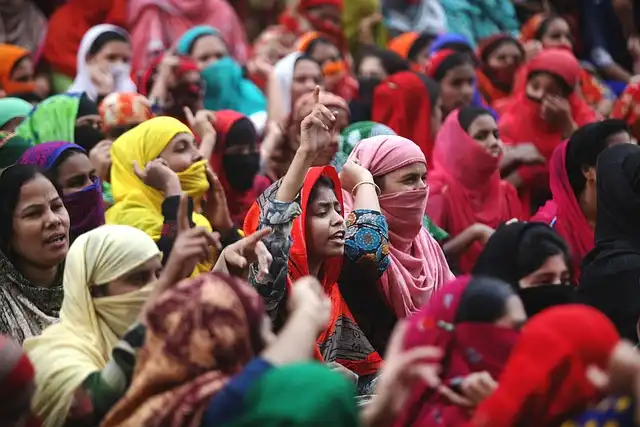Parade: Queer History, Love & Resistance in Canada

"Parade" honors queer history, activism & memory in Canada. It revives collective memory, highlights LGBTQ2S+ rights fights & activists, preserving stories via archives and personal narratives. #QueerHistory #LGBTQRights
In an early scene in Parade: Queer Acts of Love & Resistance, loads of individuals outfitted in natural leather jackets, blazers and bell bases march towards the Parliament Buildings in Ottawa. It had actually been stored in a shoebox of movie reels belonging to protestor Jearld Moldenhauer, who photographed several early queer demos in the country. Ceremony arises at a time of increased rate of interest in queer and trans background. The film honours the memory work– of keeping in mind, sharing and recording history– done by many queer seniors and activists. Many queer archives are maintained within the area, by witnesses and lobbyists who have developed personal collections by collecting photos, film and ephemera over the years.
Early Queer Demos in Canada
In a very early scene in Parade: Queer Acts of Love & Resistance, dozens of people outfitted in natural leather coats, sports jackets and bell bottoms march toward the Parliament Structures in Ottawa. Some lug rain-battered indicators with mottos like “We will certainly not hide our love away,” while others connect arms and huddle under umbrellas.
Xtra’s Role in LGBTQ2S+ Culture
Xtra is an online magazine and area platform covering LGBTQ2S+ culture, national politics and health and wellness. We aim to break boundaries, believe beyond binaries and build bridges within our neighborhoods and beyond.
Parade’s filmmakers are aware of the docudrama’s instructional duty in this context. Gonick, whose queer bizarro sci-fi flick Hey, Delighted! premiered at Sundance in 2001, claims Ceremony works as a tool package for the security of queer rights. “The movie actually define the steps that were taken: the organizing, the protests, what the issues were, just how people rose to the obstacle in numerous districts over the decades to fight back and to win these gains,” he claims. Parade handles the hefty and ambitious duty of trying to restore the community’s collective memory of how rights had actually been defended and accomplished by a generation of activists throughout Canada.
Ceremony honours several key activists that have actually passed away, like Lesbian Company of Toronto founder Chris Bearchell and reporter Gerald Hannon. We see their photos, hear their voices from archival recordings and watch them commemorate on the roads as other protestors recount their legacy. The film acutely portrays this feeling of communal loss, commemorating numbers whose names have actually long been left out from history publications. It is likewise a contact us to arms to connect to and learn from the queer seniors who are still with us, and to maintain stories that are gradually vanishing. Ceremony invites us to see the ghosts, and challenges us not to avert.
Archival Challenges & Community Archives
Searching for and accessing queer historic documents is typically a challenging feat. Component of the problem is that numerous institutional archives, like those owned by colleges and governments, have actually long excluded queer life and society, or provided a view concentrated on the experiences of white cis gay men. Several queer archives are kept within the area, by activists and witnesses that have created individual collections by gathering photos, movie and ephemera over the decades.
There are, certainly, traumatic parallels in between the occasions documented in Ceremony and modern strikes on LGBTQ2S+ legal rights. As the film unpacks the experience of Jeanine Maes, who was institutionalized in a Montreal psychiatric healthcare facility in 1962 to “heal” her of the “mental disease” of homosexuality, there are mirrors of anti-trans speaking points and the medicalization of sex nonconformity today. Debates concerning the gay age of permission in the ’70s call to mind recent plans restricting trans young people’s ability to choose concerning their own bodies. On a more enthusiastic note, the story of exactly how American anti-gay crusader Anita Bryant’s 1978 visits to Canadian cities united and galvanized LGBTQ2S+ activists mirrors the experiences of neighborhood neighborhoods that integrated in counter-protests versus anti-trans groups that have actually targeted sexual preference and gender identification (SOGI) academic resources in colleges over the past couple of years.
Pimlott states the deep influence that interview had on the movie staff. “When Yvette was telling that story, there had not been a completely dry eye because workshop,” she claims. “I seemed like that was in fact a extremely effective and healthy and balanced experience– due to the fact that we do need to be able ahead with each other and additionally grieve, and dance.”
Ceremony’s group approached the historical process by drawing greatly on its members’ existing partnerships with protestors, archivists and neighborhoods. Gonick says the team also became a conduit for film regarding LGBTQ2S+ life in Canada; even if video really did not make the final cut, it was passed on to the ArQuives for conservation.
AIDS Crisis and Collective Loss
One of the most poignant minutes of the film comes in the phase concerning the AIDS dilemma and the loss of a generation of queer protestors. In the movie, grief worker Yvette Perreault defines caring for young gay guys as they passed away of AIDS. She speaks about losing all of the individuals she used to go dancing with when she first came out.
Parade emerges at a time of increased passion in queer and trans history. Among trans individuals and several queer, there seems to be a restored desire to look to the past for lessons to tackle the development of anti-LGBTQ2S+ movements and regulations across the globe today.
Premiere at Hot Docs Festival
Ceremony is set to premiere on Thursday at the opening night of Toronto’s Hot Docs Festival, the biggest docudrama celebration in The United States and Canada. The film recounts key minutes in the defend LGBTQ2S+ rights in Canada, with phases devoted to events like the 1981 authorities raids on bathhouses in Toronto and the intro of the term “Two-Spirit” in Winnipeg in 1990. Instead of an omniscient narrator, Ceremony is driven by protestors and elders recounting their experiences. This personal testimony is coupled with historical video that captures the power of public experience and collective action. The lovely colour video footage of protests is deeply moving: lesbians, trans people and gay guys march shoulder to shoulder, filling up Toronto streets that will be well-known to lots of neighborhood viewers. It’s a technique to narration that drastically centres the firm of individuals that participated in, attested to and recorded transforming points in the nation’s growing queer motion.
The images and video footage in Parade comes not just from organizations like the ArQuives, the only nationwide LGBTQ2S+ archives in Canada, however from the cellars and homes of protestors. Manufacturer Justine Pimlott says that also as greater social approval has made it feasible for even more queer and trans individuals to be out, situating these historical materials was an obstacle. “The archives become the brand-new thing in the storage room, as opposed to individuals,” she claims.
Archives are breakable. This is often real of their physical kind– they exist in various styles that might need to be digitized and kept in unique ways– however also of what they stand for. Pimlott states that while Ceremony functions activists sharing minutes of joy and victory, there are additionally tales of struggle, violence, pain and trauma.
It had been stored in a shoebox of film reels belonging to lobbyist Jearld Moldenhauer, who photographed many early queer demos in the nation. The video footage brings colour to a turning point in the background of queer activism in Canada, recording the demonstration on rough, classic Super 8 film.
Where Parade’s practicality truly radiates is not in revealing the basics of how objections were arranged and plan change was passed through cumulative activity. The movie honours the memory work– of bearing in mind, documenting and sharing history– done by many queer senior citizens and activists.
1 Canadian activism2 LGBTQ2S+ rights
3 Memory work
4 Queer archives
5 Queer history
« Deported Gay Asylum Seeker: Congressional Demand for AnswersDrag Race 17 Finale: Highs, Lows & the Crowning of Onya Nurve »
